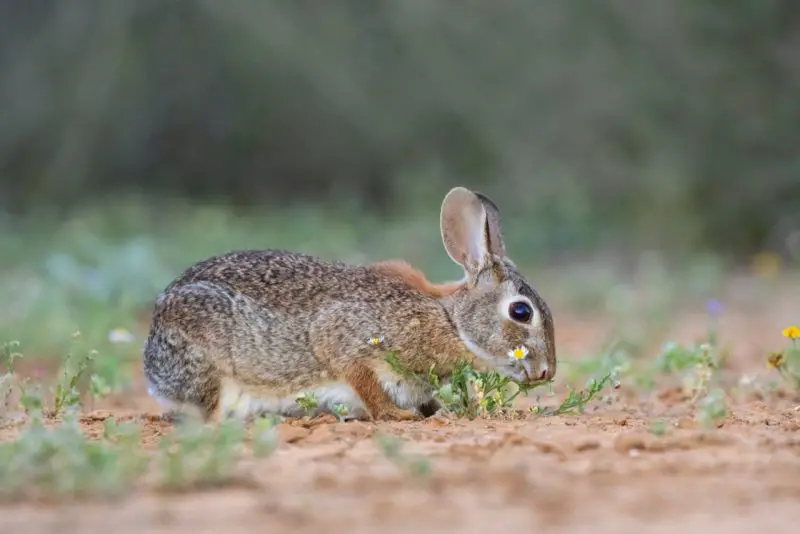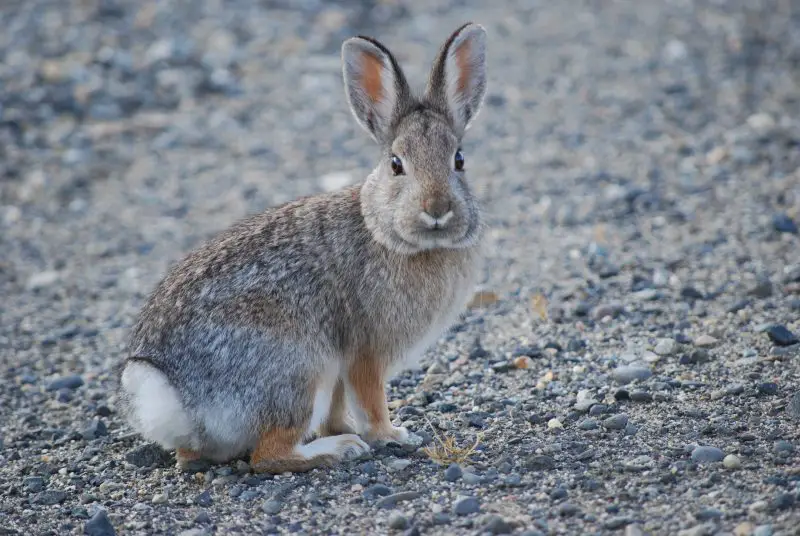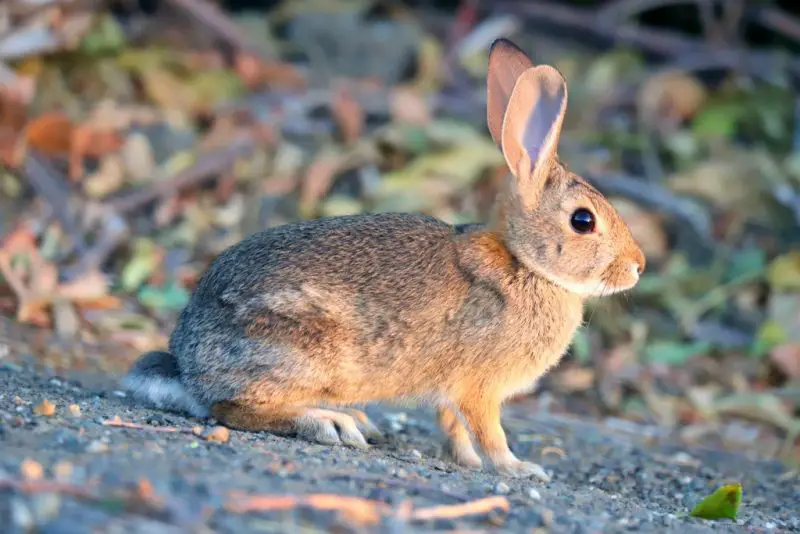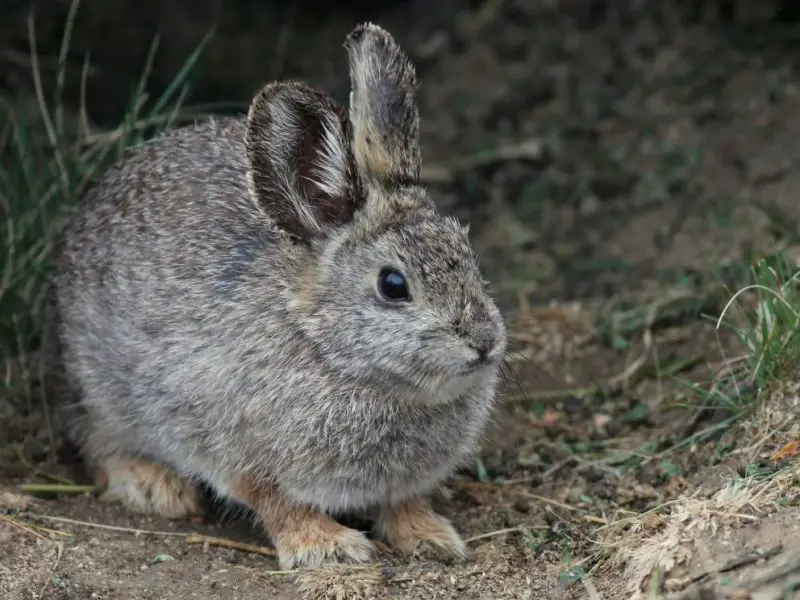Wild rabbits are a common and fascinating part of Colorado’s diverse wildlife. From grassy plains to mountainous slopes, these nimble mammals adapt to a variety of habitats, making them an exciting species to observe in the wild. Their alert behavior, unique markings, and swift movements captivate wildlife enthusiasts and casual observers alike.
Colorado is home to several rabbit species, each with distinct characteristics and habitat preferences. The Eastern Cottontail thrives in open fields and suburban areas, while the Mountain Cottontail prefers rocky slopes and high-elevation meadows. Desert Cottontails are found in arid southwestern regions, and the elusive Pygmy Rabbit is restricted to dense sagebrush habitats.
Understanding these rabbits’ behavior, diet, and physical traits makes spotting them in the wild much easier. Observing them during their active hours at dawn and dusk, in their preferred environments, provides a rewarding glimpse into the daily lives of Colorado’s wild rabbits.
Common Wild Rabbits Found in Colorado
Eastern Cottontail (Sylvilagus floridanus)

The Eastern Cottontail is among the most abundant rabbit species in Colorado and one of the most familiar to residents. Their fur is a mottled mix of brown, gray, and rust tones, which blends seamlessly with grasses, fields, and woodland edges. Their large, dark eyes provide excellent vision in dim light, while their prominent ears allow them to detect subtle sounds of approaching predators. A fluffy white tail, resembling a cotton ball, is a defining feature and a visual signal when fleeing.
Adults typically measure 14–18 inches in length, with a weight range of 2–4 pounds. Their strong hind legs allow for quick acceleration, often reaching speeds up to 18 miles per hour, which helps them evade hawks, owls, foxes, coyotes, and domestic dogs. Eastern Cottontails are mostly active during dawn and dusk (crepuscular), though they can occasionally be spotted during the day in quiet, undisturbed areas. They are solitary animals but may share territory when food is abundant.
Eastern Cottontails are herbivores, feeding primarily on grasses, clover, and garden plants during spring and summer. In winter, they shift to woody twigs, bark, and buds from shrubs and trees. Their foraging behavior involves nibbling close to protective cover, minimizing exposure to predators. Breeding occurs from early spring to late fall, with females capable of producing up to six litters per year, each containing 3–8 kits. Nesting sites are shallow depressions in tall grass, lined with fur and vegetation to provide insulation and camouflage.
In Colorado, Eastern Cottontails are widely distributed across the eastern plains, foothills, riparian corridors, and suburban neighborhoods. They adapt well to human-altered landscapes, often thriving in pastures, gardens, and parks. Their survival depends on a combination of open areas for foraging and dense vegetation for cover, making the state’s varied habitats ideal for sustaining large populations. Seasonal migration is limited, as they remain in familiar home ranges year-round, relying on their knowledge of cover and food resources to survive harsh winters.
Mountain Cottontail (Sylvilagus nuttallii)

The Mountain Cottontail is smaller and more slender than its eastern cousin, with grayish-brown fur accented with darker shades on its back and lighter underparts. Their ears are proportionally shorter, and their face has a slightly pointed appearance. Unlike the Eastern Cottontail, the white underside of their tail is less conspicuous, blending subtly with the surrounding vegetation. These rabbits are highly adapted to mountainous, rocky terrain, often found among cliffs, slopes, and high-elevation meadows.
Adults measure 13–16 inches in length and weigh between 1.5–3 pounds. They are agile and fast, with powerful hind legs designed for leaping across rocks and rugged terrain. Predators include hawks, eagles, coyotes, bobcats, and weasels, which makes vigilance and rapid escape critical for survival. Mountain Cottontails are primarily nocturnal but may venture out in early morning or late evening, especially in undisturbed areas. Their activity peaks during cooler periods to conserve energy at high elevations.
Mountain Cottontails feed on a variety of grasses, shrubs, sagebrush, and low-growing plants. In winter, they rely on woody browse, including twigs, stems, and bark. Reproduction occurs from late spring through summer, with females producing two or more litters of 2–6 young each year. Nests are often hidden under rock outcroppings, shrubs, or dense grass clumps rather than in burrows. The kits are born blind and helpless, relying entirely on maternal care for warmth and protection during their early weeks.
In Colorado, Mountain Cottontails inhabit the central and western mountainous regions, including the Rocky Mountain foothills. They favor open meadows, rocky slopes, and shrub-dense areas where they can quickly retreat from predators. Seasonal movement is minimal, although they may shift to lower elevations during harsh winter conditions. Their ability to navigate rugged terrain allows them to occupy areas less accessible to humans, although they can occasionally be spotted along hiking trails and forest edges.
Desert Cottontail (Sylvilagus audubonii)

The Desert Cottontail is native to the arid regions of southwestern Colorado. Their fur is pale gray-brown with lighter underparts, blending seamlessly with sandy, rocky, and scrubby desert habitats. They have large, expressive eyes and long ears, enhancing their ability to detect predators in open landscapes. The white underside of their tail is less prominent than other cottontails, helping maintain camouflage when escaping. Adaptations to dry conditions allow them to survive in areas with limited water availability.
Adults are 14–17 inches long and weigh 2–4 pounds. They are alert and fast runners, capable of sudden zigzag movements to evade predators such as hawks, bobcats, coyotes, and snakes. Desert Cottontails are crepuscular, foraging mainly during early morning and late evening to avoid daytime heat. They are highly aware of their surroundings, often pausing mid-run to scan for danger.
Desert Cottontails primarily feed on desert grasses, cacti, sagebrush, and other shrubs. They rarely drink water, obtaining hydration mainly from their food. Reproduction occurs from spring through fall, with multiple litters per year, each containing 3–6 young. Nests are shallow depressions lined with grass and fur, usually concealed under rocks or low shrubs to protect young from predators and harsh weather. Their survival strategies include rapid sprinting, zigzag movements, and staying close to cover.
In Colorado, Desert Cottontails are concentrated in the southwestern lowlands, plateaus, and desert scrub regions. They thrive in open deserts, canyons, and semi-arid shrublands, often near water sources or patches of vegetation. These rabbits are highly adaptable to arid environments, capable of coping with temperature extremes, scarce food, and predator pressure. Human development has limited some of their habitat, but they persist in less disturbed desert areas.
Pygmy Rabbit (Brachylagus idahoensis)

The Pygmy Rabbit is the smallest rabbit species in North America and one of the rarest in Colorado. Adults have grayish-brown fur with lighter underparts and a subtle white tail. Their compact body, short ears, and small size allow them to move efficiently through dense sagebrush. Their diminutive stature makes them highly vulnerable to predators, requiring constant vigilance and use of protective cover. They are secretive and often remain hidden, emerging mostly under the cover of darkness.
Pygmy Rabbits measure only 9–12 inches in length and weigh between 0.8–1.5 pounds. Despite their size, they are capable diggers, creating burrows in loose soil under sagebrush. Predators include raptors, coyotes, foxes, bobcats, and weasels. They are primarily nocturnal, though they occasionally forage during dawn or dusk in areas with dense vegetation. Their alert behavior and rapid, darting movements help them avoid predation.
These rabbits feed almost exclusively on sagebrush, including leaves, stems, and bark, although they may supplement their diet with grasses and other low-growing plants. They obtain most of their hydration from food and rarely drink water. Breeding occurs from late winter to early summer, with 2–3 litters per year, each containing 2–6 kits. Burrows are dug beneath sagebrush, providing shelter from predators and harsh weather conditions. Kits are born blind and dependent on maternal care for the first few weeks.
In Colorado, Pygmy Rabbits are restricted to sagebrush ecosystems in the eastern and southwestern parts of the state. Their dependence on dense sagebrush makes them highly vulnerable to habitat loss caused by agriculture, development, and wildfires. These elusive rabbits are rarely seen due to their secretive nature, small size, and specialized habitat requirements. Conservation efforts focus on preserving sagebrush landscapes to ensure their survival.
Best Times and Locations to Observe Wild Rabbits in Colorado
Observing wild rabbits in Colorado requires understanding their daily activity patterns and preferred habitats. Most rabbit species, including Eastern Cottontails, Mountain Cottontails, Desert Cottontails, and Pygmy Rabbits, are crepuscular, meaning they are most active during dawn and dusk. Early morning hours just after sunrise and late evening just before sunset provide the best opportunity to see them foraging and moving between cover and feeding areas. During the hottest part of the day, rabbits tend to rest in dense vegetation, under shrubs, or in burrows to avoid predators and extreme temperatures.
Eastern Cottontails are easiest to spot in open fields, pastures, parks, and suburban gardens across eastern and central Colorado. Look for them along edges of meadows and brushy areas, where they can quickly retreat to cover if threatened. Mountain Cottontails are more elusive and are best observed in rocky slopes, alpine meadows, and mountainous foothills in the western and central parts of the state. Hikers in less-traveled trails or forest edges during early morning or late evening have a higher chance of spotting these agile rabbits.
Desert Cottontails inhabit the arid southwest regions, plateaus, and desert scrublands of Colorado. Observers should focus on areas near low shrubs, canyons, or washes during cooler hours at sunrise or sunset, when these rabbits are actively feeding. Pygmy Rabbits are among the most secretive species and are confined to dense sagebrush habitats in eastern and southwestern Colorado. Due to their small size and shy behavior, spotting them often requires patience, quiet movement, and observation during twilight hours when they leave their burrows to feed.
In general, walking slowly along trails that border meadows, brushy edges, or sagebrush flats increases your chances of sightings. Binoculars are recommended for distant observation, especially for Mountain and Pygmy Rabbits, which are wary of human presence. Seasonal variations also play a role: spring and early summer are ideal for observing juveniles with their parents, while fall is excellent for spotting adults actively foraging before winter. Maintaining a quiet, unobtrusive presence is key, as sudden movements or loud noises can quickly send rabbits fleeing to safety.
FAQs About Wild Rabbits in Colorado
What types of wild rabbits are found in Colorado?
Colorado is home to several wild rabbit species, including the Eastern Cottontail (Sylvilagus floridanus), Mountain Cottontail (Sylvilagus nuttallii), Desert Cottontail (Sylvilagus audubonii), and the Pygmy Rabbit (Brachylagus idahoensis). Each species has unique adaptations to specific habitats, from grasslands and suburban areas to high-elevation mountains and arid deserts.
When is the best time to see wild rabbits in Colorado?
Wild rabbits are mostly crepuscular, meaning they are most active during dawn and dusk. Early morning and late evening provide the best opportunities to observe them foraging or moving between cover. During the day, rabbits usually rest in dense vegetation or burrows to avoid predators and heat.
Where can I find wild rabbits in Colorado?
Eastern Cottontails are common in fields, pastures, and suburban gardens. Mountain Cottontails are found in rocky slopes and alpine meadows of western and central Colorado. Desert Cottontails inhabit arid southwest regions and desert scrublands, while Pygmy Rabbits are restricted to dense sagebrush areas in the eastern and southwestern parts of the state.
What do wild rabbits eat in Colorado?
Wild rabbits are herbivores. Their diet varies by species and season but generally includes grasses, clover, herbs, shrubs, bark, twigs, and leaves. Desert and Pygmy Rabbits rely heavily on sagebrush and desert plants, while Eastern and Mountain Cottontails feed more on grasses and leafy vegetation.
How do rabbits protect themselves from predators?
Rabbits rely on camouflage, speed, and alertness. Their coloring blends with their habitat, and they use zigzag running to evade predators such as hawks, coyotes, bobcats, and foxes. Many species also hide in burrows, rock crevices, or dense shrubs during the day to avoid danger.
How often do wild rabbits reproduce in Colorado?
Most rabbit species in Colorado have multiple litters per year. Eastern Cottontails can produce up to six litters annually, while Mountain, Desert, and Pygmy Rabbits typically have 2–3 litters per year, with each litter containing 2–8 young depending on species and environmental conditions.
Are any wild rabbits in Colorado endangered?
The Pygmy Rabbit is considered rare and has a limited distribution, mainly in dense sagebrush habitats. Habitat loss due to agriculture, development, and wildfires threatens their populations. Other rabbit species, like Eastern, Mountain, and Desert Cottontails, are widespread and not currently endangered.
Can I safely observe wild rabbits without disturbing them?
Yes. Observing rabbits requires quiet, slow movement and using binoculars for distant viewing. Avoid sudden movements, loud noises, or approaching too closely, as rabbits are easily startled and will flee to safety. Early morning or late evening is the best time for minimal disturbance.






